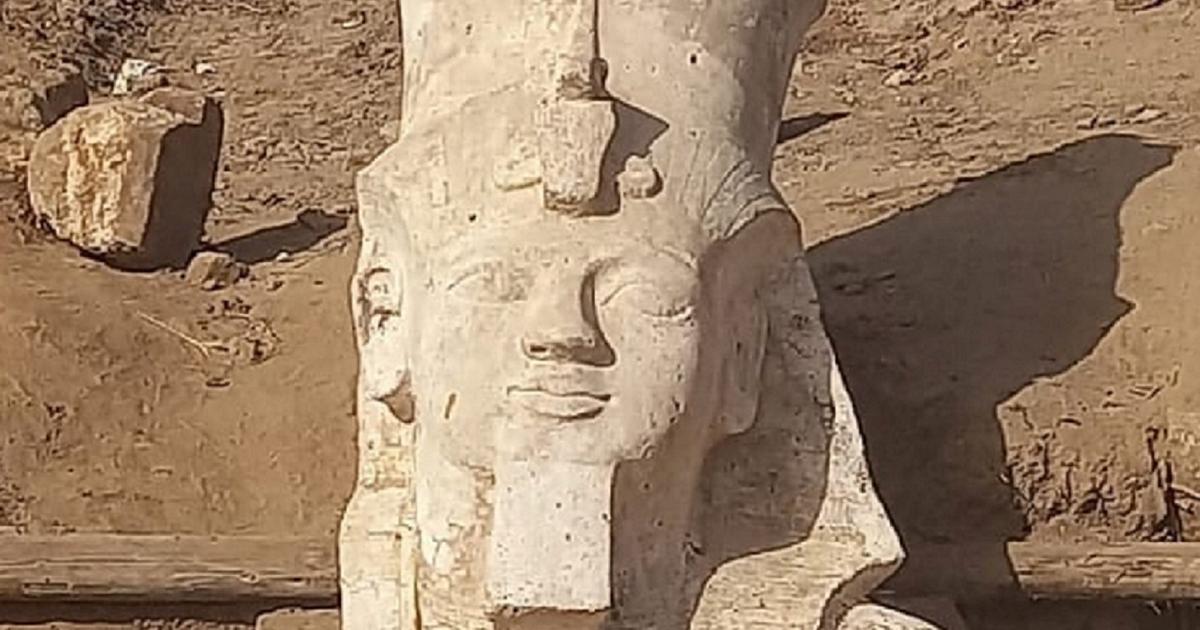The lower part of an imposing statue of Ramses II was discovered in 1930 by the German archaeologist Günther Roeder, during excavations at Khemenou, an ancient Egyptian city located in the Middle Egypt region.
Almost a hundred years later, a missing piece of the puzzle was discovered near the modern city of El-Ashmunein, thanks to an Egyptian-American archaeological mission.
The announcement was made by the Egyptian Ministry of Tourism and Antiquities on Facebook on March 4, 2024.
The excavations were to make it possible to find the treasures of the ancient religious center Khemenou and its temples, including the one renovated by King Ramses II three millennia ago.
The statue represents Ramses II seated, wearing a double crown and a headdress decorated with a royal cobra.
The upper part of the statue's rear column shows hieroglyphic writings that glorify the king.
Complete photograph of the fragment found.
The Egyptian Ministry of Antiquity / via REUTERS
Ancient Egypt's most powerful pharaohs, known as Ramesses the Great, reigned from 1279 to 1213 BCE, during the 19th Dynasty of the New Kingdom.
He was the third pharaoh of this dynasty.
“
He was an adult (around 20
years old) when he ascended the throne and he died around 90
years old, so he must have appeared as a god or an immortal king ,
”
recalls Egyptologist Frédéric Payraudeau to Le
Parisien
.
Mustafa Waziri, Secretary General of the Supreme Council of Archaeology, highlighted the importance of this discovery because the archaeological study carried out on the upper part of the statue turned out to be a complement to the first lower part discovered by the archaeologist Günther Roeder in 1930. Cleaning has already started with a view to completely reforming the statue.
The city of El-Ashmunein, located on the west bank of the Nile, was known in ancient Egypt as Khemenou (the place where part of the statue was found) and in Greco-Roman times was the regional capital of Hermopolis Magna.

